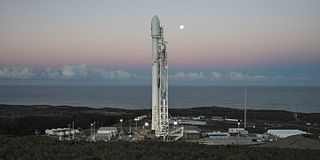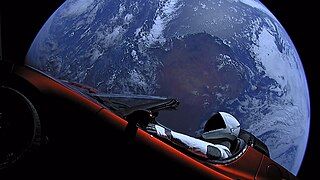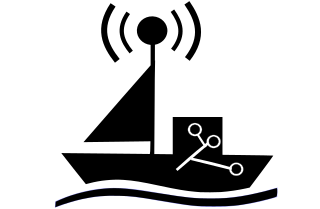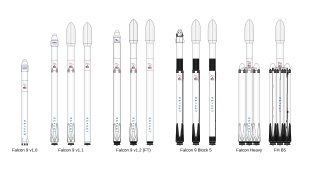
Space Exploration Technologies Corp., commonly referred to as SpaceX, is an American spacecraft manufacturer, launch service provider, defense contractor and satellite communications company headquartered in Hawthorne, California. The company was founded in 2002 by Elon Musk with the goal of reducing space transportation costs and ultimately developing a sustainable colony on Mars. The company currently operates the Falcon 9 and Falcon Heavy rockets along with the Dragon and Starship spacecraft.

Falcon 9 is a partially reusable medium-lift launch vehicle that can carry cargo and crew into Earth orbit, designed, manufactured and launched by American aerospace company SpaceX. It can also be used as an expendable heavy-lift launch vehicle. The first Falcon 9 launch was on 4 June 2010. The first Falcon 9 commercial resupply mission to the International Space Station (ISS) launched on 8 October 2012. In 2020 it became the first commercial rocket to launch humans to orbit and remains the only such vehicle. It is the only U.S. rocket certified for transporting humans to the ISS. In 2022, it became the U.S. rocket with the most launches in history and with the best safety record, having suffered just one flight failure.

Space Launch Complex 4 (SLC-4) is a launch and landing site at Vandenberg Space Force Base, California, U.S. It has two pads, both of which are used by SpaceX for Falcon 9, one for launch operations, and the other as Landing Zone 4 (LZ-4) for SpaceX landings.

This article documents notable spaceflight events during the year 2019.

This article documents notable spaceflight events during the year 2018. For the first time since 1990, more than 100 orbital launches were performed globally.

An autonomous spaceport drone ship (ASDS) is an ocean-going vessel derived from a deck barge, outfitted with station-keeping engines and a large landing platform, and is autonomously positioned when on station for a landing. Construction of the drone ships was commissioned by aerospace company SpaceX to allow recovery of launch vehicle boosters at sea for missions that do not carry sufficient fuel to return to the launch site after boosting spacecraft onto an orbital or interplanetary trajectory.

Falcon 9 Full Thrust is a partially reusable medium-lift launch vehicle, designed and manufactured by SpaceX. It was first designed in 2014–2015, with its first launch operations in December 2015. As of 25 March 2024, Falcon 9 Full Thrust had performed 294 launches without any failures. Based on the Laplace point estimate of reliability, this rocket is the most reliable orbital launch vehicle in operation.

This article documents notable spaceflight events during the year 2020.

Falcon 9 booster B1058 was a reusable Falcon 9 Block 5 first-stage booster manufactured by SpaceX. B1058 was the first Falcon 9 booster to fly fourteen, fifteen, sixteen, seventeen, eighteen and nineteen times and broke a turnaround record on its later flights. Its first flight was for Crew Dragon Demo-2, the first crewed orbital spaceflight by a private company. The booster was the first and only Falcon 9 booster to feature NASA's worm logo and meatball insignia, which was reintroduced after last being used in 1992. The booster's service ended shortly after its nineteenth successful landing when it toppled over on the droneship due to high winds and rough seas.

Falcon 9 B1060 is a Falcon 9 first-stage booster manufactured and operated by SpaceX. It is the senior active rocket for the company since the demise of B1058 on 25 December 2023. As of 24 March 2024, it has flown to space and landed 19 times, matching the record of B1058, B1061 and B1062.









